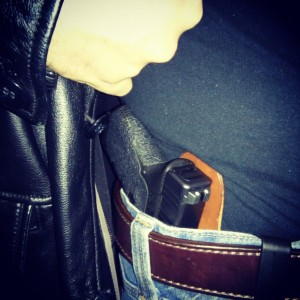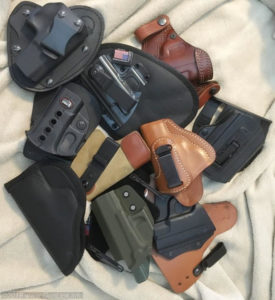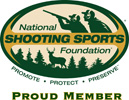Concealed Carry Basics Part 3: CCW Belts
Don’t Underestimate this Important Piece of Carry Gear
 This is the third installment in the Concealed Carry Basics series. In Part 1, we addressed the factors involved in choosing the right firearm for you to carry. In Part 2, we brought up a number of considerations in choosing one of the main pieces of carry equipment: the holster.
This is the third installment in the Concealed Carry Basics series. In Part 1, we addressed the factors involved in choosing the right firearm for you to carry. In Part 2, we brought up a number of considerations in choosing one of the main pieces of carry equipment: the holster.
As mentioned in the holsters piece, one of the most common means of concealed or openly carrying a firearm is “on the hip” or, rather, somewhere on the waist. Wherever you decide to carry on your waist, it is important to have a good holster that is well fitting, comfortable, secure, and easy to access. Lots of CCW-ers put a lot of time, effort, and money into finding the right holster but overlook another piece of equipment that is equally (or more) important: the belt. Here, in Part 3 of the series, we will address that.
If you haven’t already, be sure to catch up on Part 1 and Part 2 of the series. If you are starting from scratch, head over to Firearms 101 for the basics on what firearms are, how they work, and commonly used acronyms.
So, do you really need a special belt to carry your firearm?
Like everything else, the answer is completely subjective and it will depend on what you are carrying, where you carrying it, and how you are carrying it. However, a good number of the issues that concealed carriers run into (which can sometimes convince them to stop carrying) can be easily solved with a belt upgrade, which is hard to believe until you have tried it. Continue reading
Concealed Carry Basics Part 2: Holster Options
You Have Your Pistol – Now How Do You Carry It?
 This is the second installment in the Concealed Carry Basics series. In Part 1, we addressed the factors involved in choosing the right firearm for you to carry. As we mentioned there, people have been carrying firearms for protection since there have been firearms. The practice can be as simple as literally carrying it (like, in your hands) or tucking it into your waistband. However, the first method will likely (at best) lead to a chat with Officer Friendly after he gets a MWaG (man with a gun) call while the second might lead to such pleasantries as a surprise vasectomy. Therefore we strongly recommend not using either method for your EDC.
This is the second installment in the Concealed Carry Basics series. In Part 1, we addressed the factors involved in choosing the right firearm for you to carry. As we mentioned there, people have been carrying firearms for protection since there have been firearms. The practice can be as simple as literally carrying it (like, in your hands) or tucking it into your waistband. However, the first method will likely (at best) lead to a chat with Officer Friendly after he gets a MWaG (man with a gun) call while the second might lead to such pleasantries as a surprise vasectomy. Therefore we strongly recommend not using either method for your EDC.
Many, if not most, folks who endeavor to carry a firearm tend to go through a number of holsters before they find the one that works best for them (or, worse, end up using a bad holster). Thus they end up having to try to sell their used holsters or having the proverbial box o’ holsters tucked away into the back of their closets. Good holsters can be somewhat pricey and a box of pricey holsters can add up pretty quickly to real money.
We’re here to help with some basics on what kind of holsters are available and some considerations to keep in mind when choosing yours. As with the choosing a firearm part, This article is not a primer on what specific holster is best or which one you should get – instead, we hope to help you find one that works best for you and your situation.
If you are starting from scratch, head over to Firearms 101 for the basics on what firearms are, how they work, and commonly used acronyms.
So, you have the firearm you want to carry for protection… what next?
First off, you should definitely use a holster – no questions asked. Sure, some people do just drop a firearm into their pocket or purse or tuck it into their waistband like they just got out of jail and found it in an unlocked glovebox, but it’s a bad idea for several reasons addressed below. Continue reading
Concealed Carry Basics Part 1: Choosing the Right Firearm
Finding the right pistol to carry
 This is the first installment in the Concealed Carry Basics series. Carrying a firearm on your person is as simple as… well, as carrying a firearm on your person. It is not rocket science – people have been carrying firearms for protection since there have been firearms – but there are pieces of information that you pick up along the way that make the practice easier, safer, and more effective. With a couple combined decades of carry experience among us, the GunLink team hopes to share some of that information with you to help make the process easier.
This is the first installment in the Concealed Carry Basics series. Carrying a firearm on your person is as simple as… well, as carrying a firearm on your person. It is not rocket science – people have been carrying firearms for protection since there have been firearms – but there are pieces of information that you pick up along the way that make the practice easier, safer, and more effective. With a couple combined decades of carry experience among us, the GunLink team hopes to share some of that information with you to help make the process easier.
This article is not a primer on what specific firearm is best or which one you should get. Rather, it lays out a number of considerations that you need to make when choosing the best firearm for you and your situation.
If you are starting from scratch, head over to Firearms 101 for the basics on what firearms are, how they work, and commonly used acronyms.
Technically, the first thing you need is the mindset – the decision to carry a firearm in the first place – but the first three parts of this series are focusing predominately on the gear, with mindset coming in Part 4. For now, let’s presume that you have decided that you want to carry a firearm for protection… what next? Continue reading








